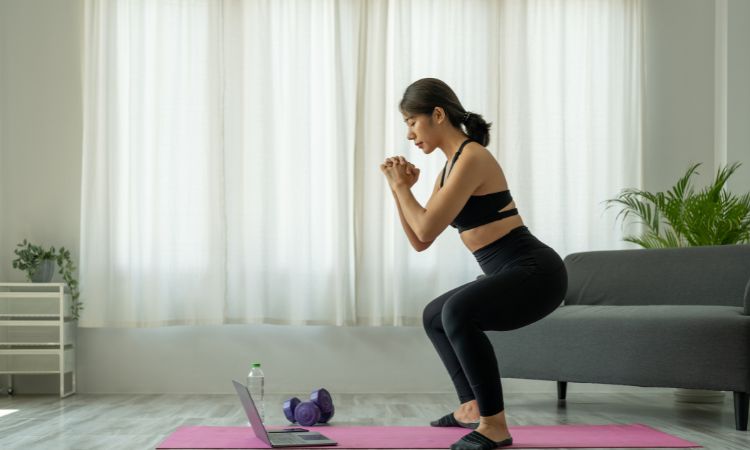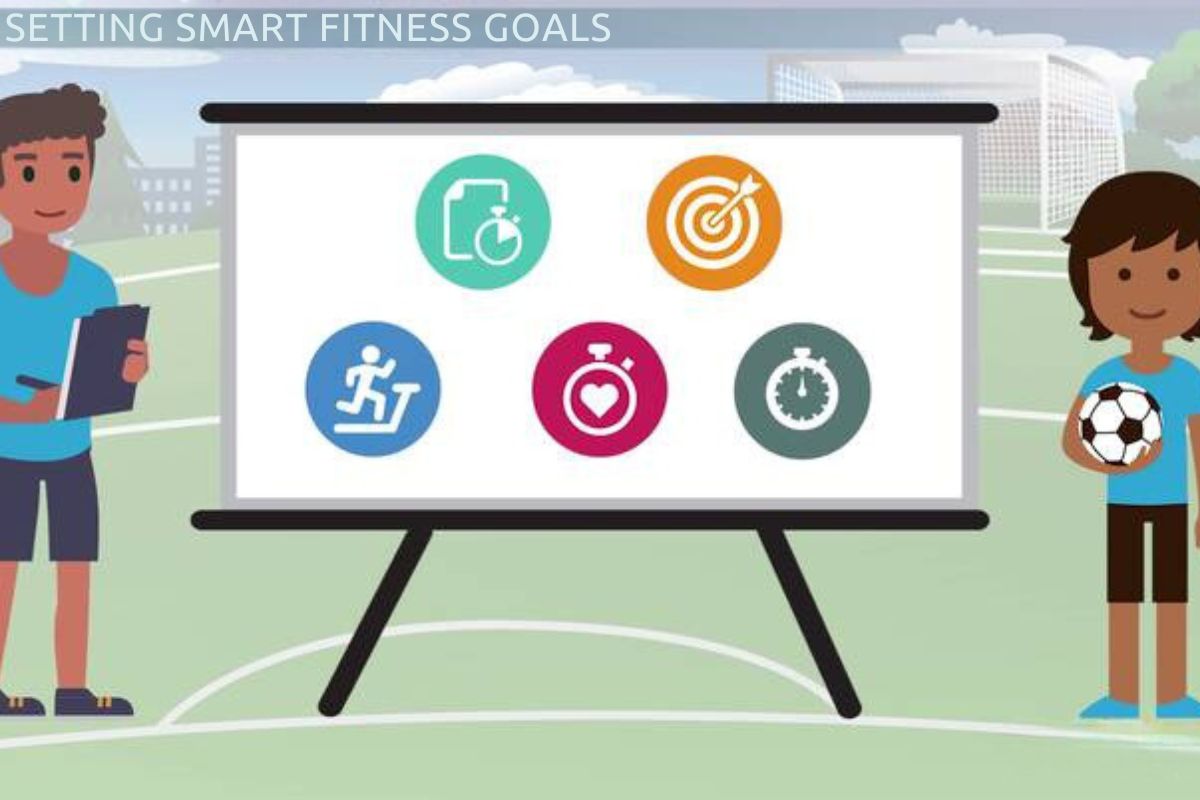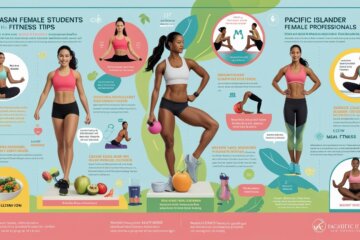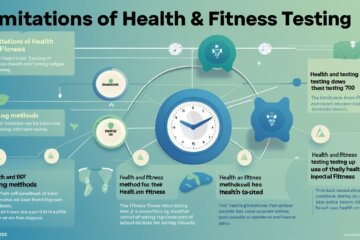Exercise and fitness myths persist due to misinformation and the influence of outdated beliefs. Misconceptions spread quickly through social media and word of mouth.
Exercise and fitness are essential for a healthy lifestyle, yet myths and misconceptions abound. These myths often arise from outdated information, anecdotal evidence, and influential but misinformed sources. Social media platforms and popular culture further amplify these misconceptions, leading to widespread confusion.
For those seeking quick fixes and shortcuts, the risk of falling for false claims is high. In the realm of health and fitness, accurate information is not just important, it’s paramount. Understanding the origins of these myths empowers individuals, giving them a deeper insight into the world of fitness. This knowledge allows them to distinguish between fact and fiction, leading to more effective and safe exercise routines and instilling a sense of reassurance and confidence in their knowledge.
The Lure Of Quick Fixes
The allure of quick fixes in exercise and fitness is undeniable. The prospect of rapid results without the commitment of long-term effort is a strong draw. However, it’s important to remember that this desire for instant gratification often fuels the perpetuation of numerous myths and misconceptions. It’s time for a shift in mindset. Understanding that sustained, long-term effort is the key to fitness can be a powerful motivator in your journey, making you more committed and motivated.
Attraction To Instant Results
People are often drawn to quick solutions for weight loss or muscle gain, seeking instant results. This attraction to immediate change leads many to believe in myths like ‘spot reduction.’ The idea that you can lose fat in a specific area by targeting that area with exercises is appealing, but it’s not true. Yet, the desire for fast changes often leads people to fall for this myth.
Another common misconception is that doing more cardio will quickly burn off all extra fat. While cardio is essential, it’s not the magic solution. Building muscle and eating a balanced diet are equally crucial. These myths stick around because they promise quick fixes, but understanding the importance of a holistic approach to fitness makes you more informed and aware.
Marketing Tactics And Myths
Many companies use clever marketing tactics to sell their products. They promise quick results with minimal effort, often spreading myths and misconceptions. For example, some ads claim that wearing certain clothes or using unique gadgets will help you lose weight faster. People believe these claims because they sound easy and convenient.
Companies also use before-and-after photos to attract customers. These photos can be misleading. They make people think they can achieve the same results quickly. This adds to the persistence of myths and misconceptions.
| Myth | Reality |
| Spot Reduction | Fat loss happens overall, not in specific areas. |
| More Cardio Equals Quick Fat Loss | Balanced workouts and diet are key. |
| Unique Gadgets for Fast Results | No gadget can replace hard work and consistency. |
- Instant results are attractive but often need to be more accurate.
- Marketing tactics play a significant role in spreading myths.
- Be cautious of quick-fix promises and always seek scientific evidence.

Credit: slideplayer.com
Psychology Behind Believing Myths
Understanding why exercise and fitness myths persist involves delving into human psychology. People often hold on to fitness myths due to various psychological factors, which shape beliefs and influence behaviors.
Cognitive Biases At Play
Cognitive biases impact how we process information. One such bias is the confirmation bias. This bias makes people favor information that confirms their preexisting beliefs. For example, someone might believe that lifting weights makes women bulky. They will then seek out information that supports this idea.
Another bias is the availability heuristic. This bias occurs when people rely on immediate examples that come to mind. If a friend shares a story about a diet that worked for them, it may seem more valid. This happens even if the diet lacks scientific support.
Social Proof And Fitness Trends
Social proof plays a significant role in the persistence of fitness myths. People often look to others for guidance, especially in uncertain situations. If many individuals follow a particular fitness trend, it gains credibility. This leads to widespread acceptance, even if the trend lacks scientific backing.
Influencers and celebrities often drive fitness trends. Their large followings and persuasive power make their recommendations seem trustworthy. As a result, myths and misconceptions spread quickly through social media and word-of-mouth.
| Factor | Description |
| Confirmation Bias | Favoring information that supports preexisting beliefs |
| Availability Heuristic | Relying on immediate examples that come to mind |
| Social Proof | Looking to others for guidance in uncertain situations |
| Influencers and Celebrities | Using their power to spread trends and myths |
- Cognitive biases shape how we interpret information.
- Social proof influences our acceptance of trends.
- Influencers and celebrities drive the spread of fitness myths.
Understanding these psychological factors can help debunk myths. It allows people to make informed decisions based on science. Recognizing cognitive biases and the influence of social proof is critical to this process.
Common Exercise Myths
Many people continue to be misled by exercise and fitness myths. These myths often need clarification and help progress. Understanding the truth behind these misconceptions is essential for effective workouts.
Spot Reduction Fallacy
The idea of spot reduction suggests you can lose fat in one specific area by exercising that part. This is a common myth. For example, doing lots of crunches won’t just burn belly fat. Fat loss occurs throughout the entire body, not in just one spot.
To reduce fat, you need a combination of cardio exercises, strength training, and a balanced diet. Focusing on overall fitness will yield better results than targeting one area.
No Pain, No Gain Misconception
The “No Pain, No Gain” belief implies that exercise must be painful to be effective. This is not true. While some discomfort is normal, pain is a sign that something might be wrong. Overworking your muscles can lead to injuries and setbacks.
Effective workouts should challenge you but not cause injury. Listen to your body. Rest and recovery are just as important as the exercise itself. Consistency, not pain, is critical to long-term fitness success.
Role Of Social Media
Social media has become a powerful platform for spreading information. But it is also a hotbed for exercise and fitness myths. These myths persist due to the rapid spread of misinformation and the influence of famous figures. Let’s explore how social media contributes to the persistence of these myths.
Influencers Promoting Fads
Many fitness influencers share workout routines and diets. Some of these are not backed by science. They promote fads to gain followers and likes. Their followers trust their advice because they seem fit and healthy. But not all influencers are experts. They may spread misleading information without knowing it. This can lead to the persistence of fitness myths. For example:
- Quick-fix diets
- Miracle supplements
- One-size-fits-all exercise plans
Misinformation Spread
Social media makes it easy to share content. False information can go viral in minutes. People see the same myths repeated often. This repetition makes them believe these myths are true. Fact-checking is only sometimes a priority on social media. This allows misinformation to spread unchecked. Some common myths include:
- Spot reduction is possible
- Cardio is the best way to lose weight
- You need to work out every day to stay fit
Tables can also help illustrate this point:
| Myth | Reality |
| Spot reduction works | Fat loss cannot be targeted to specific areas. |
| Cardio is best for weight loss. | Strength training is also practical. |
| Daily workouts are necessary. | Rest days are essential for recovery. |
Social media plays a significant role in spreading fitness myths. Understanding this role can help us become more critical of the information we consume.
Science Versus Myth
The world of exercise and fitness is full of myths and misconceptions. These myths often contradict scientific evidence. Understanding the difference between science and myth is vital for anyone aiming to live a healthier life.
Evidence-based Fitness
Evidence-based fitness relies on research and data. Scientists conduct studies to find out what works best. They test different exercises, diets, and habits, and the results are then shared with the public.
For example, research shows that strength training is essential for everyone, not just bodybuilders. It helps build muscles, boosts metabolism, and improves bone health. These findings are based on numerous studies and experiments.
Cardio exercises like running and swimming are also backed by science. They improve heart health and increase stamina, and scientists have proven these benefits through extensive research.
Debunking Myths With Research
Debunking myths requires solid research. Many fitness myths persist because they are easy to believe. But science helps us see the truth.
For instance, spot reduction can help lose fat from specific body parts. Research shows this is false. You cannot lose fat in just one area. Fat loss happens across the entire body.
Another common myth is that more exercise always means better results. Studies show that over-exercising can lead to injuries and burnout. Balance is critical to a healthy exercise routine.
Here is a table to illustrate some common myths and the scientific facts that debunk them:
| Myth | Scientific Fact |
| Spot reduction works | You cannot target fat loss in specific areas. |
| More exercise is always better. | Too much exercise can cause injuries. |
| Carbs are bad for you. | Healthy carbs are essential for energy. |
Research helps us understand what truly works in fitness. It clears up misconceptions and guides us toward healthier choices. By focusing on evidence-based practices, we can achieve better results and avoid common pitfalls.
Impact Of Myths On Health
Myths and misconceptions about exercise and fitness can hurt your health. These false ideas can change how you work out. They can also change how you feel about your body. Understanding the impact of these myths is crucial.
Risks Of Following False Advice
Following false advice can lead to severe risks. Incorrect exercise routines can cause long-lasting injuries, and people might also use improper techniques, straining muscles and joints.
False diet advice can cause nutritional imbalances. Eating the wrong foods can make you weak. It can also lead to weight gain or loss. Both can be dangerous.
| Myth | Risk |
| Spot Reduction | Localized muscle fatigue |
| Overtraining | Increased risk of injury |
| Skipping Meals | Nutritional deficiencies |
Long-term Health Consequences
Believing myths can lead to long-term health problems. Consistently doing the wrong exercises can cause chronic pain. This pain can affect daily life. It can make simple tasks difficult.
A poor diet based on myths can lead to severe diseases. You might face heart problems. You could also develop diabetes. These conditions are hard to manage.
- Chronic back pain
- Joint issues
- Heart disease
- Diabetes
Emotional health can also suffer. Believing you must look a certain way can lead to stress. It can also cause anxiety and depression.
Expert Insights
Exercise and fitness myths persist, often due to outdated information. Professionals offer insights to debunk these myths. Understanding their views helps clear misconceptions and promotes healthier practices.
What Professionals Say
Experts stress the importance of evidence-based information. They highlight that many myths stem from old studies or misinterpreted data. Scientific research evolves, and staying updated is crucial.
For instance, some believe that spot reduction—targeting fat loss in specific areas—works. Experts clarify that fat loss occurs uniformly across the body. Another common myth is that lifting weights makes women bulky. Professionals emphasize that weight training tones muscles and boosts metabolism.
Advice From Trainers And Doctors
Personal trainers and doctors recommend personalized fitness plans. They argue that each person’s body responds differently to exercise. Trainers suggest mixing cardio, strength training, and flexibility exercises for balanced fitness.
Doctors advise against extreme diets and over-exercising. They warn that these practices can harm the body. Instead, they promote a balanced diet and regular, moderate exercise.
Here are some key points from trainers and doctors:
- Focus on overall health, not just appearance.
- Consult professionals before starting new workout routines.
- Listen to your body and avoid pushing past pain.
Regular check-ups with healthcare providers ensure safe and effective fitness practices.

Credit: www.linkedin.com
Promoting Accurate Fitness Information
Exercise and fitness myths persist due to misinformation. To counter this, promoting accurate fitness information is crucial. Educational initiatives and encouraging critical thinking can help debunk these myths.
Educational Initiatives
Schools and communities can play a significant role in spreading accurate fitness information. They can implement fitness education programs to teach the truth about exercise.
Fitness centers and gyms can also host workshops and seminars. These events can educate people about the benefits of proper exercise.
Online platforms can use social media campaigns to reach a broader audience. They can share verified fitness tips and debunk common myths.
|
Initiative |
Details |
|
School Programs |
Teach students about exercise and fitness truths. |
|
Gym Workshops |
Host events to educate members on proper exercise techniques. |
|
Social Media Campaigns |
Share verified information and debunk myths online. |
Encouraging Critical Thinking
It is essential to teach people to think critically about fitness information. Questioning sources and seeking evidence-based answers can help individuals make informed decisions.
Encouraging people to research before accepting fitness advice can prevent the spread of myths. Please provide them with reliable sources and scientific studies to refer to.
- Question the source of fitness information.
- Look for scientific evidence to support claims.
- Consult experts in the field for accurate advice.

Frequently Asked Questions
How Does Exercise Improve Physical Health?
Exercise boosts physical health by strengthening muscles, improving cardiovascular fitness, enhancing flexibility, and promoting weight management. Regular activity reduces the risk of chronic diseases like diabetes and heart disease. It also improves mental health by reducing stress and anxiety. Stay active to enjoy these benefits.
What Are Three Benefits Of Regular, Brisk, And Sustained Exercises?
Regular, brisk, and sustained exercises improve cardiovascular health, boost mental well-being and aid in weight management. Consistent activity strengthens muscles and enhances endurance.
What Are Muscular Strength Benefits?
Muscular strength improves overall fitness, boosts metabolism, enhances joint health, and increases bone density. It reduces injury risk, supports better posture, and promotes mental well-being. Strength training also aids in daily activities, improving quality of life.
Why Do Fitness Myths Still Exist?
Fitness myths persist due to misinformation, outdated beliefs, and sensationalized media. Social media spreads these myths quickly, making them hard to dispel.
Conclusion
Exercise and fitness myths persist due to misinformation and widespread misconceptions. It’s crucial to rely on credible sources for accurate information. Educate yourself to differentiate between myths and facts. Stay informed to achieve your fitness goals effectively. Understanding the truth helps you make better health and fitness decisions.

“As the voice behind Radiant Glow Health, we are dedicated to being your ultimate wellness and vitality companion. Our mission is to inspire and guide you on your journey to a healthier and more vibrant life. Join us as we explore holistic health practices and empower you to radiate wellness from within.”



